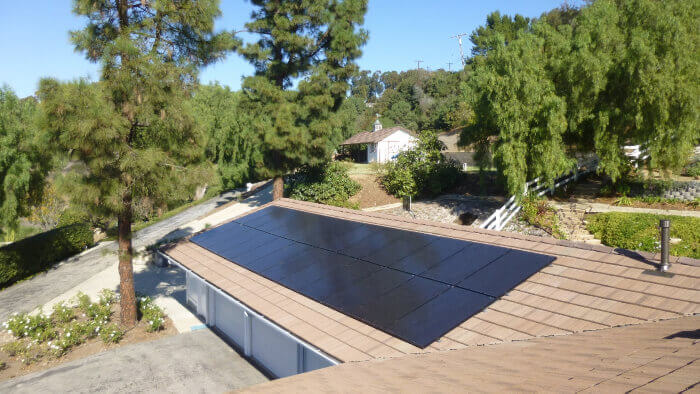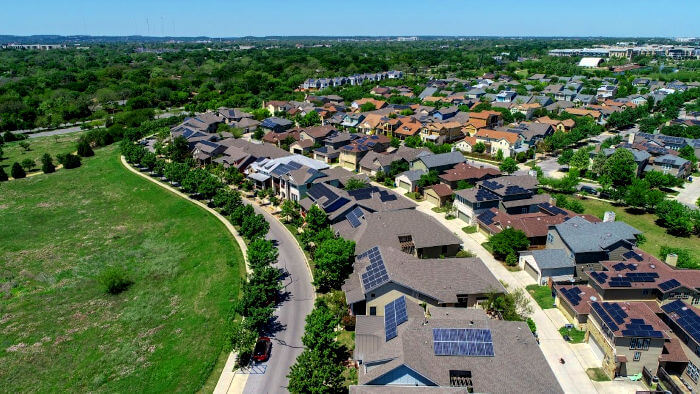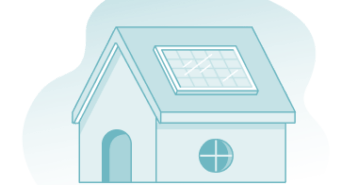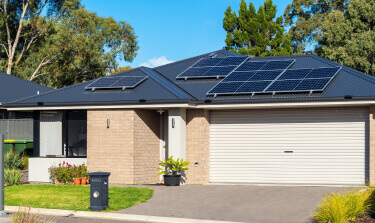Solar Panel Calculator
Use the calculator above to determine how many solar panels your home needs based on square footage and kilowatt hours. Just enter a few details, like your ZIP Code and home size, and we’ll tell you how many panels you need. It only takes a few minutes! Read on to learn how to manually calculate your panel needs.
How to Calculate the Number of Solar Panels for Your Home

If you want to answer the question “how many solar panels do I need?” or you’re curious how our solar panel calculator works, here’s what you should know.
We start with your ZIP Code to determine how many peak sunlight hours your area gets. Then, we estimate your electricity needs based on the average usage for a home your size. These details help us calculate how many solar panels it will take to power your home efficiently.
If you want to do the math yourself, you’ll need three key pieces of information:
- Your household’s average daily electricity usage
- The average number of peak sunlight hours your home receives each day
- The wattage of the solar panels you plan to install
With these numbers, you can get a good estimate of the system size that fits your needs.
Formula For Finding How Many Panels You Need
If you’re trying to estimate your solar panel needs, here’s the basic formula we use We’ll break it down step by step:
Average daily electricity usage ÷ Average daily peak sunlight hours = System size (in kW)
System size × 1000 ÷ Panel wattage = Number of panels you need
How to Find Your Average Daily Energy Usage
For your average daily energy usage, review your most recent electricity bill. Some utility companies offer a running average or the last 12 months of usage information.
Your Region’s Peak Sunlight Hours
How much peak sunlight your home receives plays a big role in how many solar panels you’ll need. Peak sunlight hours refer to the times of day when the sun’s intensity is strong enough for solar panels to generate power at their full capacity. This number varies by region, which is why some states are more favorable for solar than others.
The more peak sunlight hours your home gets, the fewer panels you’ll need to meet your energy needs. Knowing your local range can help you right-size your system and potentially save money. The National Renewable Energy Laboratory offers helpful state-by-state data, but for the most accurate estimate, it’s best to consult a professional solar installer who can assess your home’s specific location and conditions.
Finding Your Panel Wattage
How Many Solar Panels Does it Take to Power a House?
Let’s walk through a real example to see how the solar panel formula works in action.
For this example, we’ll use an average-sized home of 2,000 square feet.
- A home of this size typically uses about 11,604 kWh per year, or around 31.8 kWh per day.
- Let’s say the home is in Kansas, where the average number of peak sunlight hours ranges from 4 to 5.5 hours per day.
- For solar panel wattage, we’ll use 325 watts, the midpoint between the typical 250W and 400W panel range.
Step-by-step calculation:
System size needed:
31.8 kWh ÷ 4 hours = 7.95 kW system (rounded to 8.0 kW for simplicity)
Number of panels needed:
8.0 kW × 1,000 = 8,000 watts
8,000 ÷ 325W = ~24.6 panels
Final Estimate:
For a 2,000-square-foot home in a state like Kansas, you’ll likely need around 20 to 25 solar panels, depending on your exact location, roof space, and energy habits. Using more peak sunlight hours (about 5.5) would lower that number to around 18 panels, while fewer sunlight hours would push it higher.
Factors Influencing How Many Solar Panels You Need
Your home’s exact solar panel requirements may be more or less than what our calculator estimates, depending on a few key factors.

Geographic Region
Where you live directly affects your solar output. The number of peak sunlight hours — not to be confused with total daylight — determines how much energy your panels can produce. For example, even if your area gets seven hours of daylight, only three to five of those hours may deliver strong enough sunlight for your panels to operate efficiently. The more peak sunlight your home gets, the fewer panels you’ll need.
Home Size
Larger homes typically require more energy to heat, cool, and power, which means more panels to meet demand. The layout matters too. A sprawling one-story home may have more usable roof space for larger panels, while a two-story home might need a mix of panel sizes to fit a more compact roofline.
Roof Configuration
The angle and orientation of your roof play a big role in solar efficiency. Ideally, panels should be installed at a 30 to 45-degree pitch, which aligns closely with the average slope of most residential roofs. Flat or low-slope roofs might require extra panels or a racking system to adjust the tilt.
Direction matters even more: in the U.S., south-facing panels get the most direct sunlight. East- or west-facing panels can still work but typically produce about 20% less energy than a south-facing setup.
Your Home’s Electricity Usage
The more energy your household uses, the more panels you’ll need, especially if your goal is to offset 100% of your usage. This varies by:
- Household Size: A family of four generally consumes more electricity than two people in the same-sized home.
- Energy-Heavy Features: Pools, spas, EV chargers, and central air conditioning significantly increase your daily energy needs.
- Additional Structures: If you have or plan to add an accessory dwelling unit (ADU) or multigenerational suite, you’ll need to account for that energy use too.
Understanding these variables will help you size your solar panel system accurately and avoid surprises when it’s time to install.
Panel Size and Output
Solar Panel Types
The type of solar panel you choose will also affect your final project size and cost. Most residential solar panels are photovoltaic (PV), which means they are constructed from several photovoltaic cells that harness sunlight and convert it into direct current electricity. You can read all about the three different types of PV panels, but here is what to know:
- Monocrystalline: Most residential solar panels are manufactured using this method.
- Polycrystalline: Less efficient and produce less power, but also cost less per panel.
- Thin-film: Most commonly used in commercial and industrial installations.
Solar Panel Key Takeaways
The number of solar panels required to power your home will depend on where you live, your home size, and household energy consumption. You also must consider whether or not you want a solar array to offset all your electricity usage and the wattage of the panels you intend to buy.
The most accurate way to figure out how many solar panels your home requires is by contacting a local and professional solar installer who can customize a quote specific to your needs.
Compare top-rated solar pros in your area.
Read real homeowner reviews, explore qualifications, and view promotions. Modernize makes it easy to browse professionals and find one that will be perfect for your project.









